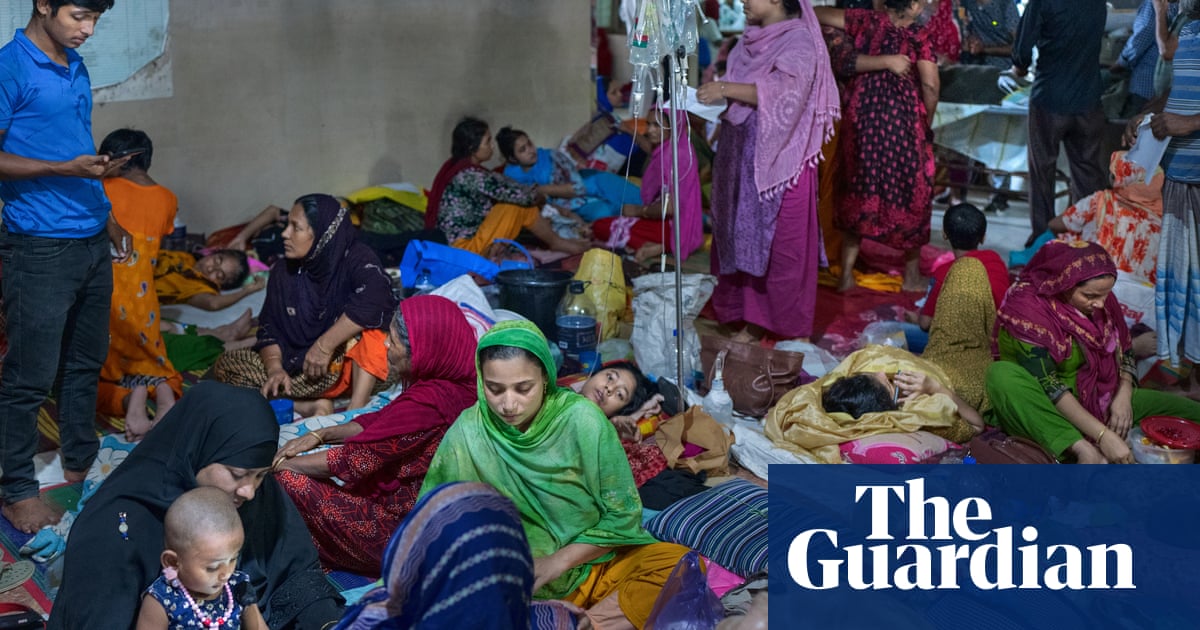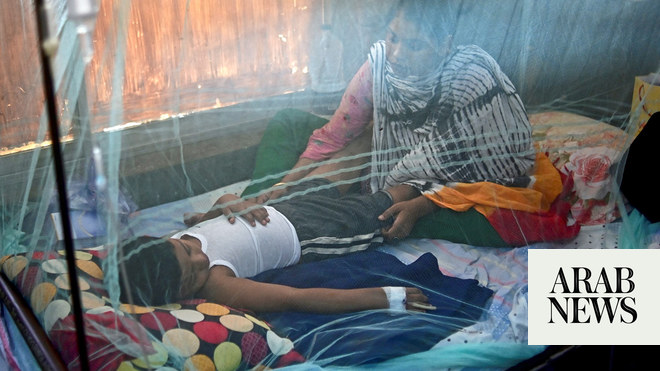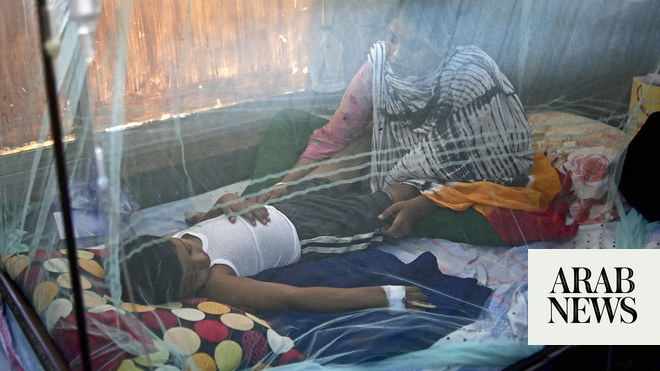
In a small, dimly lit control room at the Directorate General of Health Services (DGHS) in Dhaka, data on Bangladesh’s dengue outbreak flashes across multiple computer screens. Government analysts here have been busy collecting and monitoring the impact of the disease across the country since cases were first reported last April.
In 2023, the total reported cases of dengue numbered 321,179, with 1,705 deaths recorded, a massive jump from the year before, when 62,000 people were known to have had the virus, and 281 died. It was the highest number of annual deaths caused by the mosquito-transmitted disease ever recorded in Bangladesh.
The deaths last year included at least 113 children. According to Save the Children, the majority of these deaths were of children under the age of 10, with 38 deaths among those under five.
“Children make up around 30% of all dengue cases in Bangladesh and are particularly vulnerable to the virus because of underdeveloped immune systems,” says Dr Shamim Jahan, Bangladesh director of Save the Children. “Those under five are particularly at risk from developing severe symptoms, such as dehydration and shock.”
Over the past few months, the surge in cases has pushed Bangladesh’s health system to the limit, with hospital corridors overflowing with patients as wards run out of beds.
“It’s been the deadliest outbreak of dengue the country has ever seen,” says Dr Mohammad Shafiul Alam, a scientist at the ICDDR,B health research centre in Dhaka.
The high death toll has continued into the new year. As of Wednesday, the outbreak had affected 756 people so far this month, resulting in 10 deaths, compared with 424 cases and three deaths this time last year.
However, the official figures may not give a true indication of the scale of the outbreak. “These reported figures are likely an underestimation of the actual burden,” says Alam. “Numerous healthcare facilities in Bangladesh operate beyond the reporting framework. This underscores the likelihood that the actual figures could be several times higher.”
Dengue cases have risen dramatically around the world, with 70% of them occurring in Asia. Globally, the World Health Organization (WHO) estimates that 3.9 billion people – or half of the world’s population – are at risk of infection. Half a million cases were reported in 2000, compared with 4.2 million in 2022: nearly an eight-fold increase.
The increasing frequency of extreme weather events is fuelling the spread of the disease into new locations and extending dengue seasons in countries where the disease is already present.
In Bangladesh, unusually high rainfall, combined with hotter temperatures and high humidity, has resulted in an increased mosquito population throughout the country. “Climate change is the critical link to the increase in numbers that we’re seeing,” says Alam.
In Mirpur, a district of north-east Dhaka, Masuma Begum watches over her nine-month-old daughter Sohana, who has contracted dengue and lies asleep beneath a fan. “She no longer has the strength to get up and play,” says Begum. “It’s been over four weeks and she still hasn’t got any better.”
Outside their house, an open drain and yard overgrown with weeds create a perfect breeding ground for mosquitoes.
“We can’t afford to admit her to hospital so I’ve been doing whatever I can to protect her at home,” says an exhausted Begum, who has not left her daughter’s side since she fell ill. “I’ve been using repellent and mosquito spray to keep the bloodsuckers at bay – but they still manage to get inside.”
Bangladesh has seen regular outbreaks of dengue over the past two decades. Yet the recent outbreak has been surprising – not only did a surge in cases start earlier than usual (typically cases start during the June-October monsoon), but the disease has also spread beyond its previous concentration in Dhaka and Chattogram (or Chittagong, as it is better known).
“In 2022, Dhaka city accounted for 63% of cases, while in 2023, 66% were reported outside Dhaka,” says Alam. “Now dengue is being reported from all 64 districts of the country.”
In response, the DGHS has repurposed six hospitals in Dhaka assigned for Covid-19 patients to manage the dengue epidemic, and increased the supply of intravenous saline and other medication across the country.
For many of Bangladesh’s urban poor, the cost of contracting dengue has added to the burdens on their households.
Sumon Miah, 28, has spent most of the past few weeks recovering beneath a flimsy mosquito net. After contracting dengue, he was unable to work and was fired from his job on a construction site. “I couldn’t afford to take any days off but was too sick to go in,” says Miah. “After 10 days, they let me go.”
His wife, Kolpona, a housemaid, had to stay at home to look after him and their two-year-old son – but then she too lost her job.
“I don’t know how we are going to cope,” sighs Miah. “We have no savings and with the money we’ve spent on medicine, there’s not enough left to cover groceries and rent.” The stress is worsening Miah’s already poor health.
Miah probably contracted the virus at work. Pools of stagnant water often found at construction sites serve as prime breeding grounds for the Aedes genus of mosquitoes, the primary vector – or transmitter – of dengue in Bangladesh.
Last July, Dhaka’s city councils began fining building owners who allowed mosquitoes to proliferate on their premises. The local government minister warned that construction work would be halted if dengue larvae were found on a building site for a third time.
The challenges are likely to persist this year. Experts warn that much more needs to be done to control mosquitoes and prevent large outbreaks.
“Bangladesh has adequate policies for managing dengue patients,” says Alam. “However, there is a pressing need to increase investments in strengthening healthcare infrastructure, particularly at the sub-district level.
He added that no vaccine had yet been found to be effective for all four variants of the dengue virus, so controlling how the virus spreads was paramount. “All four have been recorded in Bangladesh at different times since 2000,” he says.
Referring to successful experiments in releasing Aedes aegypti mosquitoes infected with a bacteria that prevents their eggs hatching, Alam says: “Implementing integrated vector-management nationwide is crucial, while exploring innovative approaches, such as releasing Wolbachia-infected Aedes mosquitoes, should also be considered.”
At Jurain cemetery, Mohamad Ismam prays in front of a fresh grave. He is mourning his aunt, who died from dengue. “She was heavily pregnant and due any day,” says Ismam.
“Her sudden death was a shock for our whole family. Before contracting the virus, she had been perfectly healthy.”
Ismam, who works in a small shop in old Dhaka, describes his disappointment at the lack of management of the situation. “It seems everyone has been affected by it one way or another,” he says. “I myself was infected a year ago. It never goes away and only seems to get worse.”












